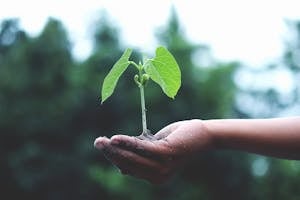
Ultimate Guide to Environmental Conservation: Practical Steps to Keep the Earth Clean
In today's interconnected world, the urgency of environmental conservation has reached unprecedented levels. With scientific consensus on climate change, escalating pollution levels, and the depletion of natural resources, individuals and communities alike are called upon to take proactive measures to safeguard our planet. This comprehensive guide delves into practical strategies and everyday actions that can significantly contribute to environmental preservation, so check these things out ASAP. From reducing waste to advocating for sustainable practices, each of us plays a pivotal role in ensuring a cleaner and sustainable future for generations to come.
Understanding Environmental Impact
 To effectively contribute to environmental conservation, it's crucial to grasp the wide-ranging impacts of human activities on our planet. Deforestation, industrial emissions, and the excessive use of non-biodegradable materials all contribute to pollution, habitat destruction, and climate change. By acknowledging these impacts, individuals can better understand the imperative of adopting sustainable practices and mitigating environmental harm.
To effectively contribute to environmental conservation, it's crucial to grasp the wide-ranging impacts of human activities on our planet. Deforestation, industrial emissions, and the excessive use of non-biodegradable materials all contribute to pollution, habitat destruction, and climate change. By acknowledging these impacts, individuals can better understand the imperative of adopting sustainable practices and mitigating environmental harm.
Reduce, Reuse, Recycle
At the forefront of environmental stewardship lies the mantra of "reduce, reuse, recycle." By minimizing consumption, reusing items whenever possible, and ensuring proper recycling practices, individuals can significantly reduce their carbon footprint and waste production. Simple everyday actions, such as using reusable bags, opting for products with minimal packaging, and segregating recyclable materials, collectively contribute to conserving natural resources and minimizing environmental impact.
Energy Conservation
 Energy consumption is a major contributor to greenhouse gas emissions and climate change. Adopting energy-efficient practices in homes and workplaces can make a substantial difference. This includes using LED light bulbs, investing in energy-efficient appliances, turning off electronics when not in use, and considering renewable energy sources such as solar panels or wind turbines. Each step towards energy conservation not only reduces environmental impact but also promotes sustainability for future generations.
Energy consumption is a major contributor to greenhouse gas emissions and climate change. Adopting energy-efficient practices in homes and workplaces can make a substantial difference. This includes using LED light bulbs, investing in energy-efficient appliances, turning off electronics when not in use, and considering renewable energy sources such as solar panels or wind turbines. Each step towards energy conservation not only reduces environmental impact but also promotes sustainability for future generations.
Sustainable Transportation
Transportation accounts for a significant portion of global emissions and air pollution. Choosing sustainable modes of transportation, such as walking, biking, carpooling, or using public transit, can help reduce carbon emissions and alleviate traffic congestion. Additionally, transitioning to fuel-efficient vehicles or electric cars further reduces environmental impact and promotes cleaner air quality in communities.
Water Conservation
 Water scarcity is a pressing issue exacerbated by climate change and population growth. Conserving water at home and in daily activities is crucial for sustainable water management. This can be achieved through simple practices such as fixing leaks promptly, installing water-saving fixtures, practicing mindful water use during activities like showering and watering plants and supporting initiatives for water conservation and watershed protection.
Water scarcity is a pressing issue exacerbated by climate change and population growth. Conserving water at home and in daily activities is crucial for sustainable water management. This can be achieved through simple practices such as fixing leaks promptly, installing water-saving fixtures, practicing mindful water use during activities like showering and watering plants and supporting initiatives for water conservation and watershed protection.
Use Alternative Solutions
Using alternative solutions is a great way to keep the Earth clean and healthy, and stainless steel manufacturing is one of those things that play a crucial role in promoting environmental sustainability. Unlike traditional steel, stainless steel is highly durable, corrosion-resistant, and 100% recyclable, making it a sustainable material choice for various industries. The practical stainless steel manufacturing process has evolved to become more energy-efficient and environmentally friendly, with significant reductions in greenhouse gas emissions and waste. Additionally, stainless steel's longevity and resistance to rust and corrosion mean that products made from it have longer lifespans, reducing the need for frequent replacements and thereby minimizing resource consumption.
Eco-Friendly Consumer Choices
Consumer behavior plays a pivotal role in shaping environmental outcomes. Supporting businesses that prioritize sustainability and ethical practices can drive positive change. Choosing products made from recycled materials, opting for organic and locally sourced foods, reducing single-use plastics, and favoring durable and eco-friendly goods contribute to a more sustainable economy and reduce environmental footprint.
Advocacy and Community Engagement
 Advocating for environmental policies and engaging in community-driven initiatives are powerful tools for effecting change. Participating in local clean-up events, tree-planting initiatives, and educational programs fosters a sense of collective responsibility toward environmental stewardship. Engaging with local governments, advocating for stronger environmental regulations, and supporting organizations dedicated to conservation efforts amplify individual impact and promote systemic change.
Advocating for environmental policies and engaging in community-driven initiatives are powerful tools for effecting change. Participating in local clean-up events, tree-planting initiatives, and educational programs fosters a sense of collective responsibility toward environmental stewardship. Engaging with local governments, advocating for stronger environmental regulations, and supporting organizations dedicated to conservation efforts amplify individual impact and promote systemic change.
Educating and Inspiring Others
Education and awareness are key catalysts for driving widespread adoption of sustainable practices. By sharing knowledge about environmental issues and practical tips for sustainable living, individuals can inspire others to take meaningful action. Leading by example within personal and professional networks, encouraging peers and community members to adopt eco-friendly habits, and supporting initiatives that promote environmental literacy contribute to a broader movement towards a cleaner and more sustainable planet.
Achieving and maintaining a clean and sustainable Earth demands collective effort and individual commitment. By implementing the strategies outlined in this guide – from reducing waste and conserving energy to advocating for policy changes and inspiring others – each of us can contribute to a healthier planet. Every action, no matter how small, contributes to preserving natural resources, protecting biodiversity, and ensuring a sustainable future for generations to come. Together, through shared responsibility and proactive engagement, we can make a meaningful difference in keeping our Earth clean, thriving, and resilient against environmental challenges.
Related Courses and Certification
Also Online IT Certification Courses & Online Technical Certificate Programs

